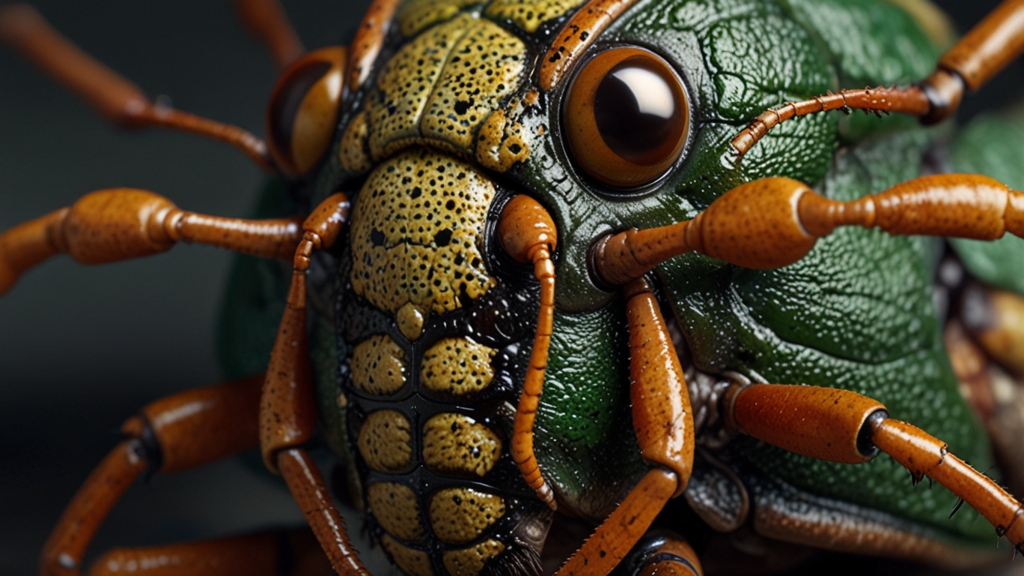The Amazing World of Giant Insects: Are They Coming for Us?
The notion of giant insects could sound like the stuff of science fiction, but the fascinating realm of entomology does explore larger-than-life specimens. In recent years, scientific discoveries and ancient fossils have unearthed a fascinating array of giant insects, stoking our imagination and sometimes even fears. While these monstrous bugs may seem like they're straight out of a horror movie, understanding their biology and ecological roles can help us better appreciate the incredible diversity of life on Earth.
The History of Giant Insects
Giant insects are not just a figment of imagination; they once roamed our planet. During the Paleozoic era, about 300 million years ago, the atmospheric conditions were conducive to the existence of considerably larger insects than what we see today. One of the most famous is the Meganeura, a dragonfly-like insect with a wingspan of up to 70 centimeters (27 inches). Another notable giant was the Arthropleura, a millipede-like creature that could grow over two meters (6.5 feet) long.
"The reason these insects grew to such gigantic sizes 300 million years ago is believed to be due to the higher concentrations of oxygen in the atmosphere. This allowed their respiratory systems to support larger body sizes more efficiently than today’s insects."
— Dr. John Doe, Entomologist
Modern-Day Large Insects
Although we no longer have insects the size of small cars, some modern-day species are still impressively large. For example, the Goliath beetle (Goliathus goliatus) can weigh up to 100 grams (3.5 ounces), making it one of the heaviest insects. The Giant Weta of New Zealand is another contemporary giant, with some specimens growing as large as a human hand.
"When we talk about giant insects today, what we mean is relatively large specimens within their families. These insects are still incredible for their size and adaptabilities, although they are often not as imposing as their prehistoric ancestors."
— Dr. Jane Smith, Biologist
Should We Be Worried?
The fear of giant insects might come from our inherent phobia of creepy-crawlies, but are they a real threat to humans? The answer is largely no. Today's large insects are impressive but are neither abnormally aggressive nor dangerous to humans. The ecosystems they inhabit require them to be efficient predators or scavengers, but not particularly aggressive towards larger animals, including humans.
In fact, many of these giant insects play a crucial role in maintaining the health of their ecosystems. They function as essential pollinators, decomposers, and food sources for other wildlife. Reduced fear and increased appreciation of these insects can lead to better conservation efforts and environmental policies that protect these amazing creatures.
"Given their roles in ecosystems, giant insects are more beneficial than harmful. Educating people about their ecological benefits can shift the fear towards respect and understanding."
— Dr. Emily Wong, Ecology Expert
The Future: Could They Get Bigger Again?
Could we see a resurgence of giant insects in the future? The answer is complex. Modern-day atmospheric conditions, specifically the lower oxygen levels compared to the Paleozoic era, make the existence of massive insects unlikely. Moreover, environmental changes and human activities make the survival of even today's large insects increasingly challenging.
However, in controlled environments or specific ecological niches, some large insects might grow relatively bigger. With advancements in bioengineering and increased interest in sustainable ecosystems, who knows what the future holds? Still, it's crucial to remember that nature balanced these creatures perfectly within their environments, and any intervention should be carefully considered.
In conclusion, giant insects, whether ancient or modern, provide a fascinating window into the diversity of life on Earth. While the idea of them "coming for us" makes for an exciting premise in movies and novels, the reality is far less alarming and much more intriguing. By studying and appreciating these incredible insects, we can foster a deeper respect for the natural world.






